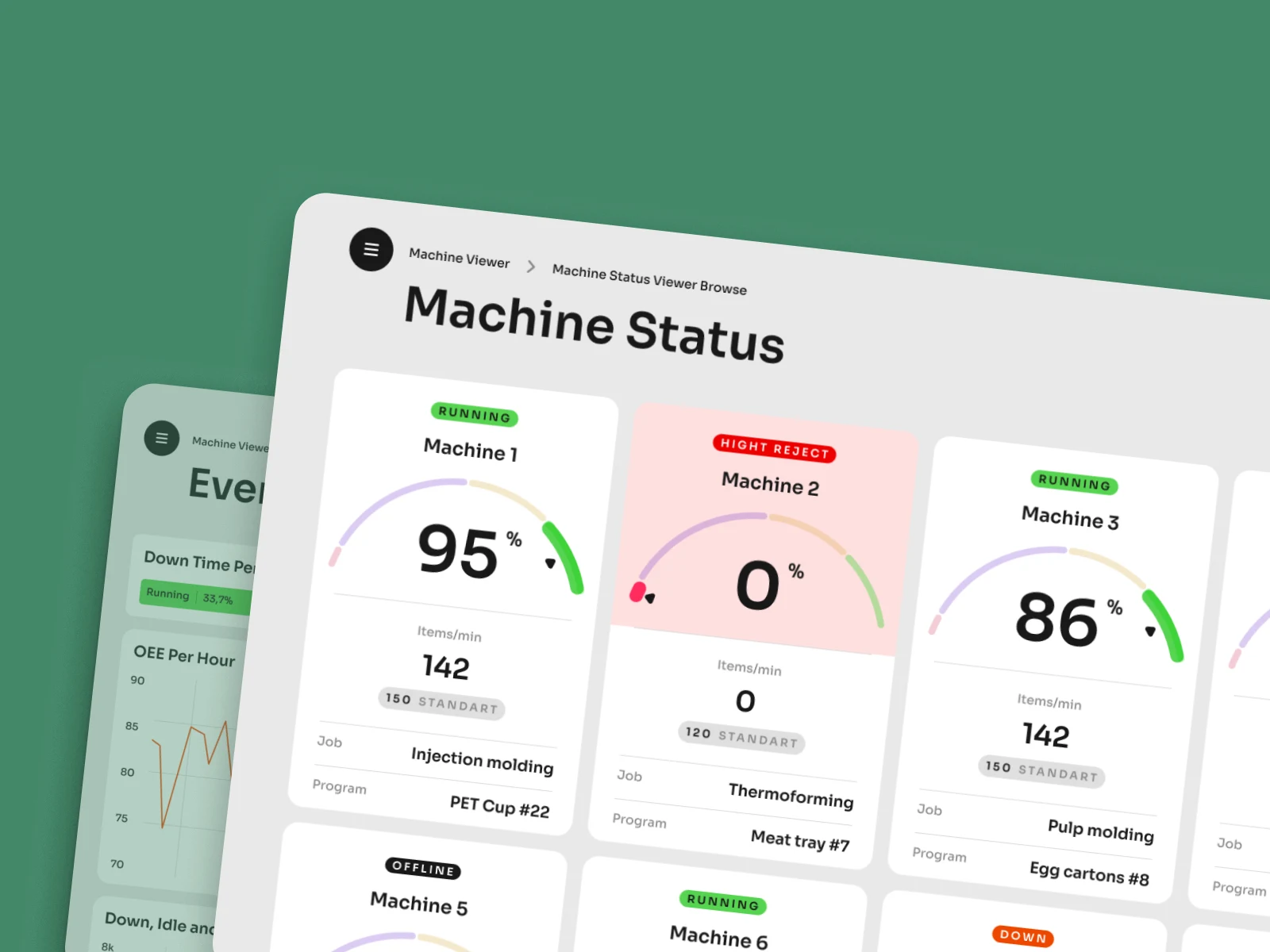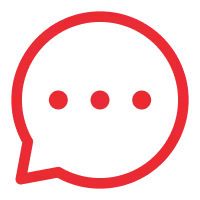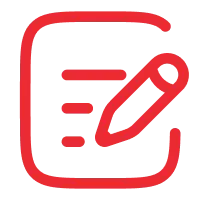Business Analysis Services
Know what your business needs and how to achieve it with our business analysis services company. Define business problems before we code solutions.

Business First
Code Next
Let’s talk
- MVP definition
- Product development roadmap
- Technology assessment
- Market research
- Strategic planning
- Competitive analysis
- Gap analysis
- Business transformation strategy
Industry-specific requirements
Build a digital solution that is perfectly tailored to your industry’s unique demands. Opt for BA services to identify specific regulatory requirements and business challenges.
Accessibility and compliance
Keep your business secure with adherence to accessibility and compliance-focused analysis. Ensure your software fully meets the GDPR, EAA, and other crucial requirements.
Streamlined processes
Accelerate your product launch with optimized workflows. Business analysis experts help identify bottlenecks, improve coordination, and ensure seamless collaboration across teams.
CodeIT — a trusted choice for many
We’ve delivered more than 500 software solutions, helping our clients achieve their goals.
Custom BA services — perfectly aligned with your needs

Product discovery services
Build a solid project’s foundation. We conduct a thorough business analysis—from top to bottom—for maximum impact.
- All-in-one service
- No team management
- Access to tools and resources
- Objective perspective

Dedicated business analyst
Empower your team with dedicated BA expertise. Gain full control and manage an augmented business analyst.
- No talent scouting hassle
- Complete control
- Onboarding support
- Short- and long-term cooperation
Need help hiring a BA?

Business First
Code Next
Let’s talk
Business analysis — key component of success for our clients’ projects
CodeIT’s business analysis consulting services are backed by data, ensuring a project’s launch is on the right track and achieving desired outcomes.

CRM with payment processing
The project had already been running before the CodeIT team had joined it. The input of our BA experts included:
- Existing project analysis
- Customer analysis
- New feature definition
- Documentation creation
- Change management

Graphical user interface (GUI) software
The client has kicked off the project fast thanks to the CodeIT’s business analyst involved in:
- Operations and workflow analysis
- Technology selection
- Epics and user stories creation

Squeeze
Mobile App to Select Insurance Offers
The mobile app for picking the best insurance offers has been successfully launched with CodeIT’s BA input, which includes:
- Project requirements analysis
- Business idea validation
- Epics and user stories creation

Machine uptime monitoring software
The loyal client has hired CodeIT as a trusted BA services company for conducting the following:
- Existing MES analysis
- Scope of work definition
- Risk analysis
- Backlog of task creation
Take next step toward project success

Business First
Code Next
Let’s talk
Business analysis services: in stages
Use business analysis as a compass to navigate your organization’s growth. Read more about the stages of business analysis and deliverables.

Elicitation
What we do:
- Interviews
- Competitors analysis
- Documentation analysis
- Reverse engineering
What you get:
- Meeting minutes—Interviews and brainstorms recordings
- Documents—Gathered and classified project documentation
- Gap analysis—Documented ”As is” and “To be” states

Analysis
What we do:
- Project scope definition
- Requirements prioritization
- Implementation stages definition
- Dependencies and constraints analysis
What you get:
- Feature list—Selection of requirements and work items
- User story map—Backlog organized by epics (modules) and releases
- Wireframes and diagrams—Visual representation of scope in view of Ul wireframes + additional diagrams

Documentation
What we do:
- Writing requirement specifications
- User stories creation
- Roles identification
- KPIs and acceptance criteria identification
What you get:
- User stories—Backlog of tasks with defined acceptance criteria
- Scenarios—Detailed logic description and use cases
- RACI matrix—Description of roles and responsibilities in a project.

Validation
What we do:
- Stakeholder interviewing
- Feedback collection
- Document adjustment
- Requirement testing
What you get:
- User stories—Validated and approved
- Scenarios—Validated and approved
- RACI matrix—Validated and approved

Continuous requirements management
What we do:
- Change request collection
- Analysis of change requests
- Requirements change validation
- Documentation update
What you get:
- Continuous project support
- Change request management
- Up-to-date documentation
We work with businesses of any scale
CodeIT partners with businesses at every phase, offering scalable solutions tailored to specific goals, regardless of company size.

Startups
We help startups turn their ideas into successful businesses with a tailored approach to each stage of growth. Define your MVP requirements to bring your product to life quickly and cost-effectively.
- Market research and analysis
- Business model development
- SWOT analysis
- Product development roadmap
- Competitive analysis
- MVP definition
- User research

Established businesses
CodeIT supports established businesses in enhancing efficiency and staying competitive in evolving markets. We help run strategic planning and facilitate change management.
- Gap analysis
- Technology assessment
- Process mapping and optimization
- KPIs development
- Strategic planning
- Cost-benefit analysis
- Change management

Large enterprises
We help startups turn their ideas into successful businesses with a tailored approach to each stage of growth. Define your MVP requirements to bring your product to life quickly and cost-effectively.
- Business process improvement
- Data analytics and business intelligence
- Regulatory compliance check
- Business transformation strategy
- Acquisitions analysis
- CRM/ERP implementation strategy
Get BA services tailored to your business

Business First
Code Next
Let’s talk
Deep business analysis expertise
Opt for business analysis services to get data-driven insights and actionable strategies to make informed decisions that align with your business goals.
Conducting an analysis of current functionalities and documenting them to enhance update efficiency.
Make a deep dive into your potential users’ needs. Form an ideal customer profile to build solutions your clients need.
Investigating competing products and analyzing market insights to select the must-have feature.
Understand users’ interactions with a product. Use detailed customer maps to improve the user experience.
Describing all the components of the system and the behavior of its elements to better understand how it should work.
Validate your business idea by releasing an MVP with the most crucial features. Launch fast and with minimal investments.
Pick the most relevant technologies that meet your project goals and existing technological limitations.
Finding external tools and libraries to enrich the product’s functionality and optimize processes.
Create a well-thought-out team structure. Define roles and responsibilities. Pick the best communication and collaboration tools.
Ensure your product matches 100% of regulatory requirements and security standards.
The creation organization of all the required project documentation to describe the solution and create a knowledge base.
Analyze potential risks and bottlenecks of your project. Develop contingency plans and ensure project resilience.
Large organizations employ business analysts
90%
Organizations believe BA is critical for digital transformation
70%
YoY growth of demand for BA experts
10%
Business analysis outputs
Delve into the valuable outputs of our business analysis services, designed to empower your project’s success.
System requirements specification
A project’s blueprint outlining what the system needs to do and what components to comprise.
Competitive market analysis report
Discover the core values and strengths of your competitors. Understand how to win the competition race.
Product business model
A detailed description of product development stages is outlined in a lean canvas. It also describes how a product will generate revenue.
Development cost and time estimates
Get a detailed description of your project’s implementation cost. Also, get a product development roadmap with time frames.
Gap analysis report
Identify the difference between the current state of our business and the goals you strive to achieve.
Customer journey map
The step-by-step visualization of user experience defines all the steps required to achieve certain results.
Target audience report
Understand your clients and define the ideal customer portrait to develop a solution perfectly tailored to the clients’ needs.
SWOT analysis report
Evaluate the key strengths, weaknesses, opportunities, and threats of your business model.
UI/UX prototypes
Create an interactive prototype of a product, outlining the visual representation of its core components.
Data models
A document defining the structure of data, its flow across the organization, and permission access for each role.
Backlog of tasks
A prioritized list of tasks must be completed to implement a digital solution and successfully release it.
Epics and user stories
The decomposed backlog of tasks comprises the description of features to develop, with a definition of what is done for each.
Defined team set
The list of roles required to complete all the tasks. Also, the list comprises tech skills requirements for each role.
RACI matrix
Understand your team set structure with assigned roles, responsibilities, and accountability.
Risk assessment and mitigation plan
Identify potential solution implementation risks and create plans on how to overcome the defined challenges.
Tech stack definition
Pick the right technologies for building your digital solution, considering the tech constraints of the existing systems.
Risks of skipping business analysis
The absence of a clear roadmap increases the risk of project failure or budget overrun. These are the foremost risks associated with skipping the business analysis phase.
The absence of a clear roadmap increases the risk of project failure or budget overrun. These are the foremost risks associated with skipping the business analysis phase.
The absence of a clear roadmap increases the risk of project failure or budget overrun. These are the foremost risks associated with skipping the business analysis phase.
Ambiguity of business goals
The lack of clearly defined business goals results in misunderstanding between stakeholders and pursuing misaligned goals.
Inadequate strategic planning
Without business analysts, organizations risk failing strategic planning because of inadequate analysis or ignoring key points.
Budget overrun
Insufficient planning and change requests lead to unexpected expenses in implementing change requests.
Technical debt and rework
Unforeseen technical challenges may appear during the development because of a lack of a solid foundation of requirements.
Increased failure risk
The absence of a clear roadmap and risk mitigation plans is a foundation for the appearance of unforeseen issues and increased costs.
Integration challenges
If a project is poorly assessed, you may face challenges with integrating third-party software.
Misaligned features
Uninformed decisions may lead to the development of features that deliver zero value or that users don’t need.
Compliance issues
A project might miss critical compliance considerations if the business analysis stage is ignored.
Lower user satisfaction
The lack of in-depth research leads to the risk of the final product not matching the needs of customers.
When to opt for business analysis
Unsure about the need for business analysis services? Check out the cases when your project may require BA input.
Unclear business goals
A project’s business goals are unclear, making it challenging to align teams, measure success, or determine the project’s direction.
Scaling business
As your business is scaling up, processes need to be updated, considering requiring strategic planning and increased complexity.
Unclear communication flow
Unclear communication and reporting flow lead to delays, confusion, and missed deadlines.
Undefined tech tasks
Tech teams struggle without clearly defined tasks, leading to inefficiencies, rework, and misaligned priorities.
Stakeholder misalignment
No consensus between two or more stakeholders can derail a project and misalign business goals.
High complexity scope
Large projects with extensive scope require careful management of resources, timelines, and risks.
Long-term project
A long-term project requires a roadmap with clear milestones and agility to tackle changing requirements.
Need for documentation
Well-prepared documentation is required to maintain project clarity and provide reliable instructions.
Priority confusion
When team members can’t effectively identify priorities, productivity and project progress drop.
Compliance concerns
Meeting regulatory requirements is crucial to avoid legal issues and ensure the project aligns with industry standards.
Put your project on the right track

Business First
Code Next
Let’s talk
Industries we work with
Opt for business analysis expertise across a wide range of industries. We understand the unique challenges and peculiarities of each industry.
Healthcare
Streamline workflows, improve data analysis, enhance patient experiences, and build regulatory-compliant applications.
E-learning
Design and develop top-tier online learning systems that are perfectly aligned with business needs and ensure effective knowledge sharing.
E-commerce
Analyze customer needs and build user-centric online platforms that provide a seamless shopping experience that drives sales.
Fintech
Ensure the fintech project meets the highest security standards and delivers a seamless user experience.
Manufacturing
Identify the opportunities for automating shop floor operations and implementing data analysis tools.
Logistics
Find the best solutions for optimizing visibility and efficiency across your supply chain.
How BAs collaborate & deliver value
Business analytics deeply integrates into teams, providing all team members with useful artifacts and step-by-step plans. Explore how they collaborate effectively with other roles when providing business analysis services.
Help interpret business goals into well-documented technical requirements and user stories.
- Workshops for clarifying and discussing technical requirements
- User stories and acceptance criteria description
- Technical documentation creation and maintenance
The artifacts shared by a BA help understand user needs for developing user-centric UX/UI design.
- User behavior research
- Ensuring the UI/UX design matches the project requirements
- Feedback gathering, analysis, and translation
BAs are involved in identifying acceptance criteria to ensure that a product meets all the requirements.
- Defining acceptance criteria for developed features
- Test cases development, matching project requirements
- User acceptance testing participation
Help identify what data needs to be collected and what insights are expected to be extracted.
- Data requirements and sources definition
- Collected data review and validation
- Reports and dashboard design creation
Collaborate with PMs for project planning, scheduling, resource allocation, risk management, etc.
- Kick-off meetings to define project goals
- Project timeline and budget estimation
- Risks and bottlenecks identification
- Provide regular status updates
- Managing change request
Requirements gathering, providing project updates, and validating artifacts.
- Interviews and product vision documentation
- Clear and consistent communication
- Project updates sharing and feedback collection
- Project requirements prioritization
- Change requests gathering and analysis
Assists product owners in composing a backlog of tasks and decomposing them into user stories.
- Backlog management and refinement
- Writing detailed descriptions for epics and user stories
- Alignment of development roadmap with stakeholders’ request
- Sprint review and feedback gathering
Benefits of business analysis
Streamline processes by following clearly defined workflows and using prepared documentation.
Clear product vision
Ensure all stakeholders have the same product vision with a well-defined roadmap for your project’s success.
Optimized product
Clearly define project requirements and develop a product your customers need that perfectly aligns with business goals.
Clear communication
Identify roles and communication channels. Create transparent communication and reporting workflows that eliminate confusion.
Project documentation
Thoroughly document project requirements, change requests, and strategic decisions for future reference.
Smooth task management
Create a professional-grade project management environment to keep tasks organized and track completion.
Reduced risks
Keep the proactive approach to identifying possible risks/bottlenecks and create mitigation plans for seamless product development.
On-time delivery
Meet planned deadlines and avoid costly delays caused by insufficient planning and unforeseen change requests.
Transparent processes
Gain a complete visibility of the project lifecycle by having all the procedures clearly described.
Change management
Make your project agile. Capture, analyze, and seamlessly implement change requests, avoiding budget overruns.
Supercharge your project with CodeIT
The business analysis services provided by CodeIT are backed by our expertise and dedication to clients’ success.

In-person meetings
Want to discuss all the project’s details in your office? It will take us up to two business days to meet you anywhere in the world.

Focused on success
We bring our expertise together to discuss and develop solutions that directly impact your business success.

Business synergy
CodeIT is dedicated to creating a collaborative environment where we and our clients can leverage each other’s strengths.
FAQ
The business analysis services dedicated to a project help an organization and its stakeholders to better understand business goals and find the best ways to achieve them.
BAs interview stakeholders, document requirements, research, validate ideas, etc. Moreover, business analysts ensure alignment between project objectives and technical implementation.
Result: Team members have thoroughly defined scope and requirements, prioritized list of tasks, and data-baked strategic decisions.
Business analysis is a crucial service that helps kick off a project on the right track and achieve the desired results by following a defined plan. The foremost activities conducted by a BA expert include:
- Stakeholder interview — to define the business vision, project requirements, and business goals.
- Market and competition analysis — to gather information about the state of the market and existing competitors that should be outperformed.
- Requirements elicitation and analysis— to understand the real business needs and priorities. Defining the best ways to achieve the outlined project goals.
- Documentation creation — the detailed description of project requirements, task to release, features to be developed, acceptance criteria, project budget & timeline, etc.
- Idea validation — ideas sharing and validation, feedback gathering, and documentation update.
- Change management — continuous change request collection and management. Project documentation update.
Business analysts cooperate in many roles in a project, helping to understand tasks and maintain consistent communication. The top roles BAs work with and what they do are:
- Stakeholders
- Gather project requirements and validate artifacts
- Document product vision and communicate
- Share project updates and collect feedback
- Prioritize project requirements and analyze change requests
- Project managers
- Plan, schedule, allocate resources, and management risk
- Estimate project timeline and budget
- Identify risks and bottlenecks
- Provide regular status updates
- Manage change requests
Business analysts cooperate in many roles in a project, helping to understand tasks and maintain consistent communication. The top roles BAs work with and what they do are:
- Software engineers
- Create technical requirements and user stories
- Clarify and discussing technical requirements
- Create and maintain technical documentation
- Quality assurance (QA)
- Define acceptance criteria
- Develop test cases
- Participate in acceptance testing
Business analysts cooperate in many roles in a project, helping to understand tasks and maintain consistent communication. The top roles BAs work with and what they do are:
- UX/UI designers
- Research user behavior
- Ensure the UI/UX design aligns with project requirements
- Gather, analyze, and translate feedback
- Data analysts
- Define data requirements and sources
- Review and validate collected data
- Design reports and dashboards
- Product owners
- Manage and refine a backlog
- Write detailed descriptions for epics and user stories
- Align the development roadmap with stakeholders’ requests
- Participate in sprint reviews and gather feedback
The input of a business analyst helps build a strong foundation and put the project on the right track. The key benefits of business analysis are as follows:
- Clear product vision—ensure all stakeholders have a unified vision.
- Smooth task management—organize tasks and track their completion.
- Reduced risks—identifying and mitigate potential risks.
- On-time delivery—meet deadlines and avoid costly delays.
- Optimized product—develop products aligned with customer needs and business goals.
- Clear communication—establishing transparent communication and reporting workflows.
- Project documentation—maintain thorough documentation for future reference.
- Transparent processes—gain visibility into the project lifecycle.
- Change management—implement change requests to keep the project agile.
The key deliverables of business analysis services include:
- System requirements specification (SRS) — a blueprint outlining system components and behavior.
- Customer journey map — visualization of user interactions.
- Product business model — development stages and revenue generation strategy.
- Target audience report — ideal customer profile.
- Competitive market analysis report — competitor strengths and market insights.
- UI/UX prototypes — visual representation of product components.
- Backlog of tasks — prioritized list of tasks.
- Epics and user stories — detailed descriptions of features and tasks.
- Defined team set — list of roles and responsibilities.
- Development cost and time estimates — cost breakdown and project timeline.
- RACI matrix — roles, responsibilities, and accountability.
- Data models — structure and flow of data.
- Tech stack definition — relevant technologies for project goals.
- Risk assessment and mitigation plan — identification and management of risks.
- Gap analysis report — current product state compared to desired goals.
- SWOT analysis report — evaluation of strengths, weaknesses, opportunities, and threats.
Avoiding business analysis can lead to several risks, including:
- Misaligned features
- Ambiguity of business goals
- Inadequate strategic planning
- Technical debt and rework
- Increased failure risk
- Lower user satisfaction
- Compliance issues
- Integration challenges
- Budget overrun
Yes, business analysts can assist with existing software and process optimization by:
- Conducting analysis of current functionalities
- Market and competitor analysis
- System architecture optimization
- Target audience analysis
- Documentation development
- Customer journey mapping
- Risk analysis
- Technology stack proposal
- Mvp scope design
- Team establishment
- Regulatory and compliance analysis





































